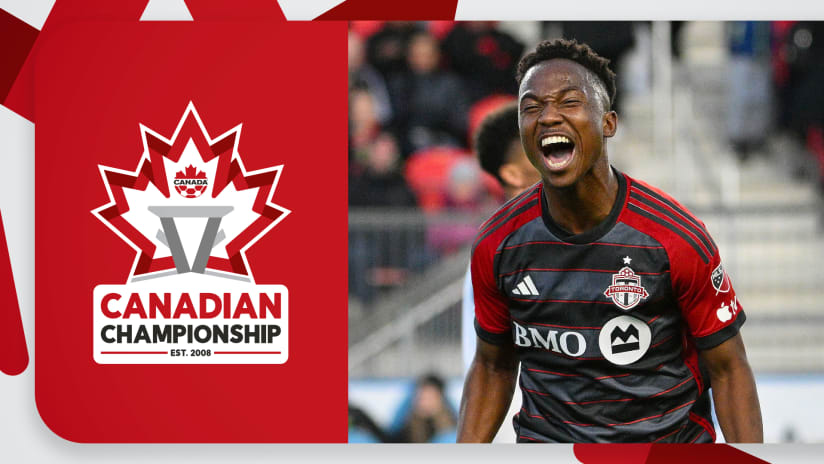One of the under-appreciated aspects of the growth of the US soccer pyramid is just how much it can help some traditional CONCACAF minnows. There are 10,000,000 Haitians living in Haiti, but another 1,000,000 (or thereabouts) living the US. Add in first- and second-generation children of Haitian immigrants, and you have a diaspora's worth of talent to draw from.
And now they're finding work. Seven members of the Haitian national team at this Gold Cup play in the 2nd-tier NASL or the 3rd-tier USL. Many more play in France, a country that is home to another huge population of Haitians and those of Haitian descent.
Did you know that included Alexandre Dumas, who wrote The Three Musketeers and The Count of Monte Cristo? His grandmother was a Haitian slave of Afro-Caribbean descent. Don't say I never taught you anything.
Anyway, the expansion and stability of the lower divisions in the US (and Canada) should do for the likes of Haiti what the expansion and stability of MLS has done for Jamaica, which is a much more consistently formidable team that it was two decades ago. There are real, professional soccer jobs to be had here, and Haiti now looks like a real, professional soccer team. They're not polished and they're far from perfect, and I suspect that, five years from now, they'll be much improved.
Regardless, the US should not take them lightly on Friday night (8:30 pm ET; FOX Sports 1 | UniMas | UnivisionDeportes | Sportsnet World). Even against the amateur/semi-pro Haiti of previous years, the Yanks haven't fared particularly well. Against this team, an upset is not at all out of the question.
Phew. Jurgen's on it.
Here's what to expect:
What they'll do: Hang back and clog the lanes
They're organized and professional, but that doesn't mean they're unaware of their limitations. Haiti were utterly pragmatic in their opening draw against Panama, defending with nine field players and conceding possession. At times it looked like they wanted nothing to do with the ball, as the numbers indicate:
That chart suggests that they were dominated, but they really weren't. Panama didn't generate a ton of great chances - their one goal came off an individual error - despite having so much of the ball, and were rarely dangerous at the back post.
This isn't anything new, since everybody knows how to bread down a bunkering team. Executing against that, however, is a different story.
How to solve it: Spread 'em out, break 'em down
Play the ball first-time and early to the flank With Honduras swarming the midfield against the US, Michael Bradley didn't get a chance to do much of this:
"Swarming the midfield" is the operative turn of phrase there, as the Catrachos used a 5-4-1 to keep the US off balance, alternately overloading the flanks and the central channels. Since neither DeAndre Yedlin nor Gyasi Zardes is all that adept at pinching in to help in possession, Bradley and Kyle Beckerman were usually asked to operate 2-vs-3 or 2-vs-4 for much of the night.
In that play above, the wide midfielders (shuttlers) are tight to Bradley, while left back Fabian Johnson has scooted up the left flank as an overlap outlet. The quick, one-time pass he receives doesn't break Germany's shape, but it puts them on the back foot.
The same thing will work against Haiti.
The other thing the US have to do better at - and this is counterintuitive because it's the opposite of the above - is carry the ball on the dribble until the defense commits, then release the pass. I thought that the few times the US got the ball in the central channels against Honduras, they were too eager to play hopefully into the channels instead of forcing the defense to bend.
What they'll do: Counter at pace
It turns out that even if you get beat by more than 2-to-1 in possession, you can still do a decent job of generating dangerous chances, provide you hit on the break. Fine, Haiti had 31 percent of the ball, which is an obscenely low number. That only matters if you blunt them in transition and use the ball to wear them out in attack.
Panama didn't manage that. They were garbage in defensive transition:
How to solve it: Blunt them on the break
It's a job of Kyle Beckerman. He came in for some stick on certain social media channels after the game against Honduras, but from my perspective that's people not understanding what they were seeing.
I'm going to recommend this mostly very good breakdown from ProstAmerika's Josh Pelini, which includes this video of the US in various stages of transition defense:
There are a couple of plays in there where Beckerman appears to get skinned, but he actually slows play down or forces it wide each time. That is the good stuff.
On the flip side, John Brooks' youthful limitations are apparent. He's excellent defending against attackers who have faced up in wide spots (arguably the best central defender the US have ever had at that specific skill), but he's poor along the edge of the box going up against forwards with their back to goal. He has to play stronger because Kervens Belfort is no joke.
What's it mean for the US?
It should mean three points. Yes, Haiti have always given the US trouble, and yes, they're a better team now.
But Klinsmann's had four years to implement a style and a system that should get the best out of his talent, which is the best group of talent in the region. He got the balance wrong against Honduras, but still got the result. This time out he should be able to show what he's learned about winning in CONCACAF, and Haiti shouldn't really be able to do a damn thing about it.














